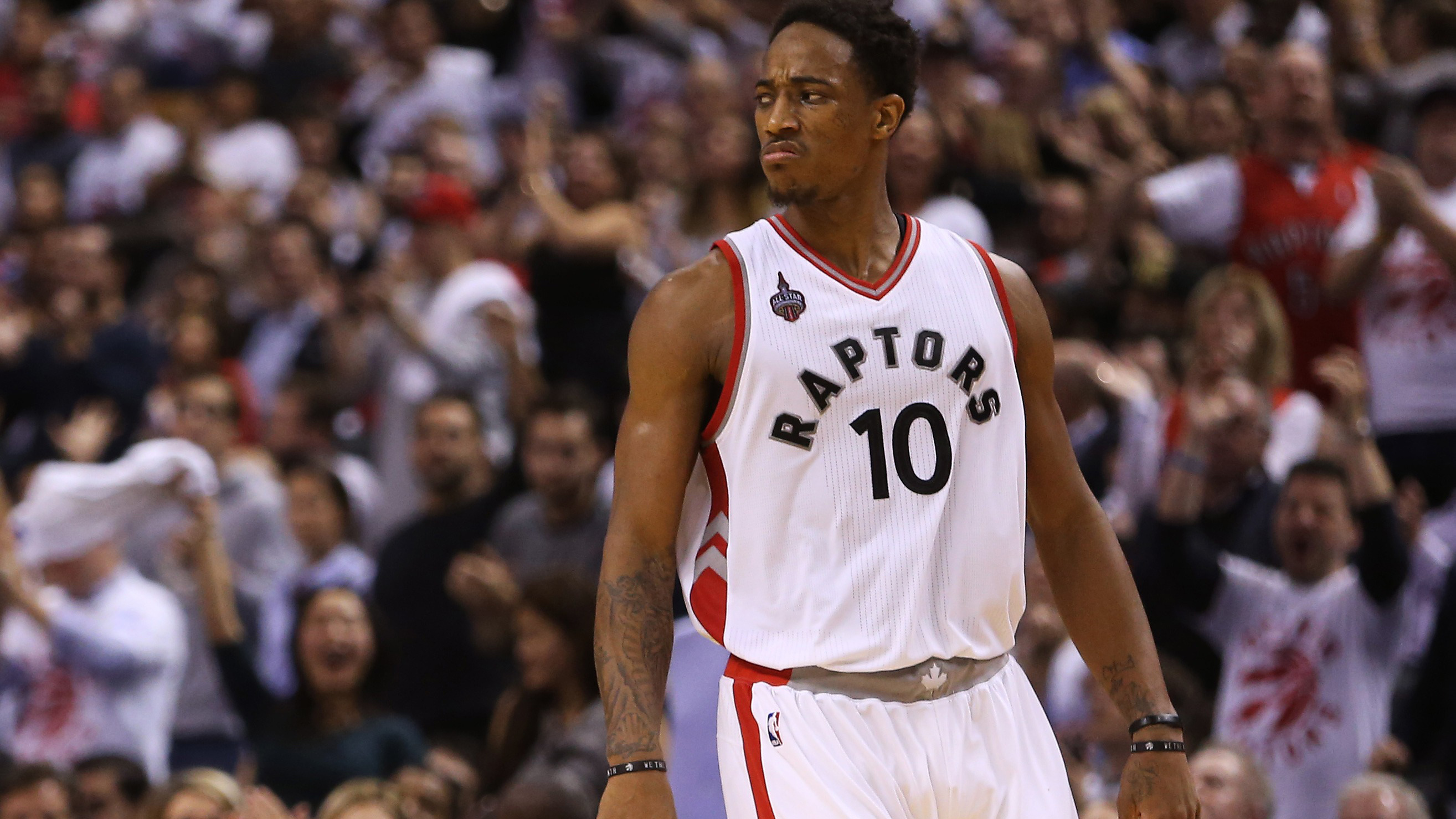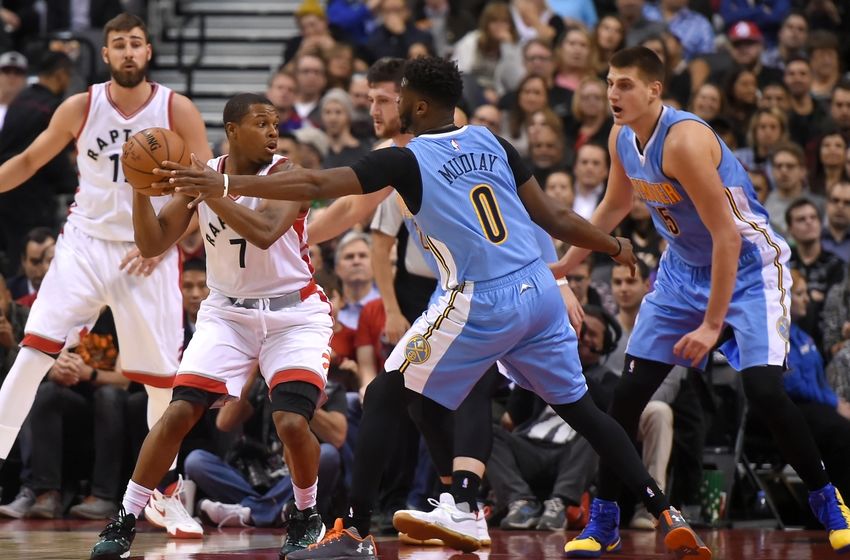DeMar DeRozan is really, really good at basketball. Surprisingly, that’s something that isn’t said enough when talking about DeRozan, or even some of the better players in the league. In the case of DeRozan, this is most likely caused by the fact that he suffers from “Ricky Rubio Syndrome”. If you’re not familiar with what Ricky Rubio syndrome is, it’s when a player gets a certain perception or label attached to them because of one flaw in their game, and that flaw becomes the primary discussion when they are brought up in conversation, inhibiting casual fans from seeing what they are truly good at. Rubio can’t shoot, watch any away broadcast of a Timberwolves game and the announcers will surely bring up the fact that Rubio struggles with his shot, failing to mention how skilled of a passer he is, his great defense, or improved ability to finish near the rim and hit his free throws.
Ricky Rubio syndrome doesn’t care how good of a player you are. People will always tend to focus on the faults of a players game rather than their positives, it’s also hard to break peoples preconceived images of a players game, even if they have worked hard to make changes. Yes DeRozan can’t play off the ball, yes DeRozan can’t shoot threes, yes DeRozan isn’t the greatest defensive player at times. Despite all these faults, he’s still a two-time All-Star, an Olympic Gold Medalist, and one of the two best players on a perennial playoff team.
Teams strive for three results to their offensive possessions, three point attempts (preferably corner attempts), shots five feet within the rim, or free throws. These shots are obviously the easiest/highest upside shots to take. DeRozan, a career 28% three point shooter, doesn’t take many threes, but he scores close to the rim and converts at the line at an elite level. Last season he attempted the most two point field goals in the NBA at 1238, which was 95 more shots inside the three point area than Brook Lopez who ranked second. He a majority of his shots near the rim, and with the defense collapsing on him, he draws a lot of contact. Last season DeRozan attempted the third most free throws at 653, and made the second most in the league 555. While at the line DeRozan converts at 85%, making the amount of attempts he has there really add up.
So if he can’t shoot from outside, and players know he’s driving to the rim, the answer to guarding him must be simple! Drop off him when he has the ball, and don’t allow him to penetrate the defense, but it’s never as simple as it seems. DeRozan continues to adapt and create with whatever defenses throw at him, and he continues to put up shots while consistently remaining to be efficient in his ability to score.
Many of DeRozan’s points are scored through isolation at the top of the key. Lets look at the play below – even in the middle of the shot clock, the Raptors offense spaces out for DeRozan to go to work. Using his great ball handling, mix of speed and strength, and ability to change speeds and directions on a dime. All these moves allow DeRozan to create enough space to effectively get his jumper up. The defender has to either commit to him driving to the rim, and finishing there potentially getting fouled, or he has to sit back and hope he misses a semi contested jumper. In the video, Kentavious Caldwell-Pope commits to DeRozan driving right on him, instead he has one more move back into his pull up jumper. Caldwell-Pope does a good job at recovering, but DeRozan’s speed already has the shot off.
DeRozan’s also very effective working isolation plays with his back to the basket. DeRozan posted up 155 times (8.5% frequency) last season, shooting 37.7% on those shots, but getting fouled 21.3% of the time. You can see from the two plays below, the first DeRozan recognizes that the smaller Emmanuel Mudiay picks him up late in the game clock. Once his back is to the basket, DeRozan creates space, uses his wide array of post shakes, and hits the turn around jumper. It’s not just smaller defenders he posts up against. As you can see in the second video, DeRozan works a ton of his post ups into the corners when the defenders cut off his drives. Taking on the bigger Marcus Morris, DeRozan fakes his way back towards the middle and turns the opposite direction for another pull up jumper.
Last season, DeRozan was 5th in the entire NBA in total isolation possessions with good reason. Scoring 0.92PPP, drawing free throws 19.3% of the time, and was third in drives to the basket per game at 11.6. Fans have fallen in love with watching teams like the Warriors, Rockets, and Spurs who space the floor out, move the ball around quickly, and take/convert on a ton of threes. Although a heavy isolation offense might not be pretty, when the ball is in DeRozan’s hands in these situations you can’t disagree that it’s not effective.
The notion that DeRozan is poor off the ball, isn’t quite true. Yes he’s not a terrific catch and shoot player, but he doesn’t have the opportunities to take a lot of spot up shots, as his defenders are usually attached to him while he is off the ball. DeRozan is actually constantly moving on offense to free himself up and get to his spots. Last season he ranked third in the NBA at miles run on offense at 1.42, behind only CJ McCollum and Gordon Hayward who play a very similar game to DeRozan. Looking at the sequence below, the Raptors have DeRozan curl around two screens to get mismatched against Kevin Love for a nice step back jumper. On the second play they run almost the exact same set, but this time he gets Richard Jefferson on his backside which allows him to attack the basket for an easy floater.
One thing the Raptors might want to take advantage of, is the amount of double teams DeRozan is getting. With Siakam in the starting lineup due to Jared Sullinger’s foot injury, defenders are sagging off Siakam and moving over to DeRozan primarily when he has his back to the basket. DeRozan is becoming better each year at recognizing when he attracts double teams, and setting up the open man to score. DeRozan’s ability to recognize these double teams faster, will create quick ball movement and open shots with the defense having to recover. This could open up shots specifically for three point shooters. Shooting threes has been a struggle for the Raptors so far this season, only shooting 18.9% (16.7 attempts per game) of their teams shots behind the three point line, which ranks them 30th in the NBA. The Raptors have the personnel in certain lineups to create open three point shots, and remaining 30th in the NBA most likely won’t last too long.
Although some people tend to underrate DeRozan’s game, specifically the Sports Illustrated rankings who had him listed as the 46th best player in the NBA this upcoming season. 46?!?!? So far this season, he’s been proving them all wrong (again), DeRozan has been absolutely unstoppable. In three games, he’s averaging 35 points per game on 26 shots at 53.8% field goal percentage, shooting 91% from the line, and his TS% is an amazing 59.6%. While a lot of this is most likely unsustainable, DeRozan has been carrying the scoring load for the Raptors early on. Maybe it’s time for people to reevaluate DeRozan’s game, remembering the player he was in his rookie season, compared to the extremely skilled player we see today. DeRozan not only has the skills to be a very good player, he’s also very smart in the way he carries out these moves. He knows his limits on the court, and understands where his best opportunities to score.




